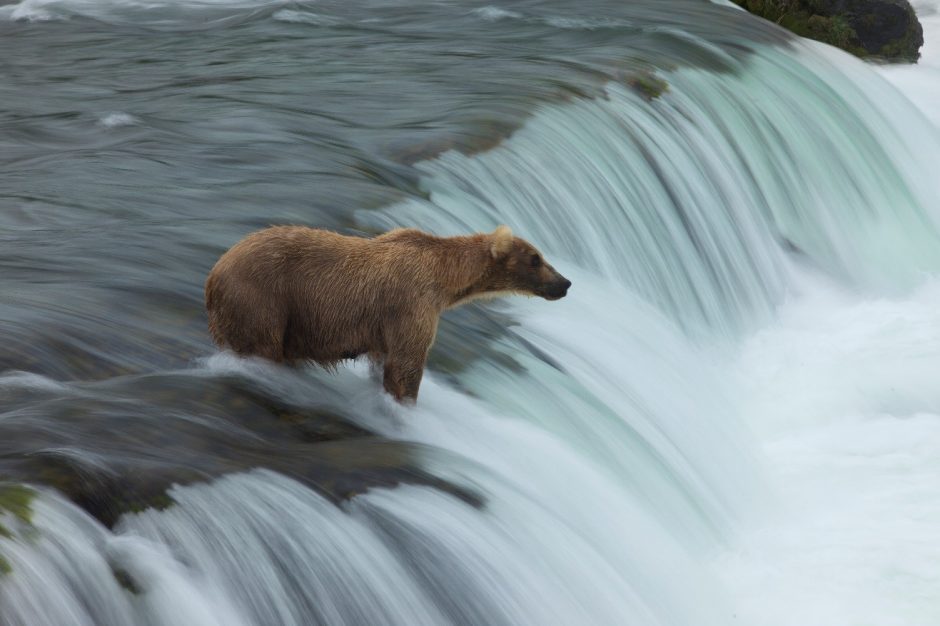
Getting this Shot: Brown Bear on Silky Waterfall
If you plan on going to Brooks Falls in the Katmai area of Alaska, you’ll likely have the opportunity for the above photograph. And if you’re a wildlife photographer, this is likely a shot that you’ve dreamt of for quite some time. Here are the steps needed to take one home just like it.
- The key here is the you need a) fast flowing water and b) an area that a bear is likely to be VERY still for a photo. If the bear is moving at all, the shot doesn’t work. Thus, while there are other places in Alaska (and the world for that matter) where you can find bears at falls, Brooks Falls in Katmai National Park is by far the best to maximize your chances.
- Once you find the area and get into position, you need to dial in your camera settings and be patient. I personally set my camera on “shutter speed” or “time value” (usually a Tv or S on your camera) so I can customize the shutter speed and let the camera choose the aperture. Truthfully, the aperture isn’t really that important since the water is going to be blurry no matter what.
- I generally take many many photos, as even the slightest movement of the bear will botch the photo…the bear will be blurry and we don’t want a blurry bear, just blurry water. I take these photos at a variety of shutter speeds, ranging from 1/10th of a second to 1 full second. You can try even longer (greater than 1 second) if you have a really patient bear.
- Because you’ll be shooting at slow shutter speeds, you’ll need to brace the camera on something so that it’s absolutely still. A tripod is my top pick, but in a pinch you can brace the camera on a railing, tree limb, or other solid structure nearby.
- Once you are fully set up, plan on taking as many photos as you possibly can – like, in the range of 40+, as you won’t really know if they turn out until you put them on the computer. While they might look perfect on the back of your camera, you may detect slight blur of the bear when you blow the photo up on your computer screen. By taking many, the chances of catching the bear at a still moment increases.
- Lastly, play around with this. Don’t just take 100 photos at 1/10 of a second and be done. See how the water blur changes with slower or faster shutter speeds. Try under or over exposing the shot to get different lighting schemes. And try different compositions, generally defaulting to a bit more “zoomed out” so that you can crop and recompose on your computer if you need to in post-processing.
- Oh, and one more! Don’t forget to sit back and enjoy a bit! This is a special moment, and while you indeed want to capture the magic for years of memories and recollection, don’t forget to savor the memories with your own mental hard drive.
Go forward and give it a shot,
1 Comment

Pam Nielsen
October 29, 2016 at 4:17 pm
Valuable advice as always. Thanks Court!